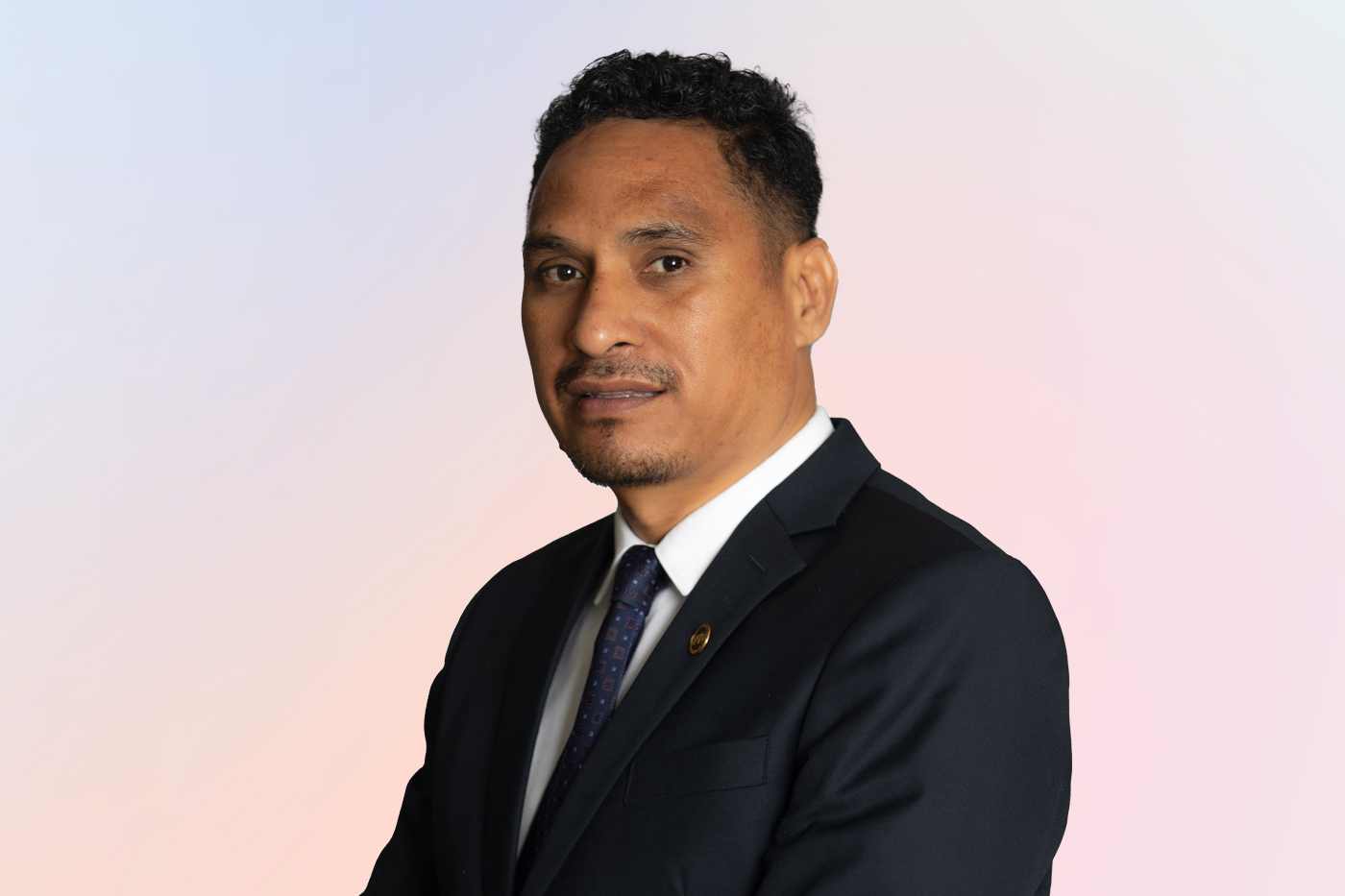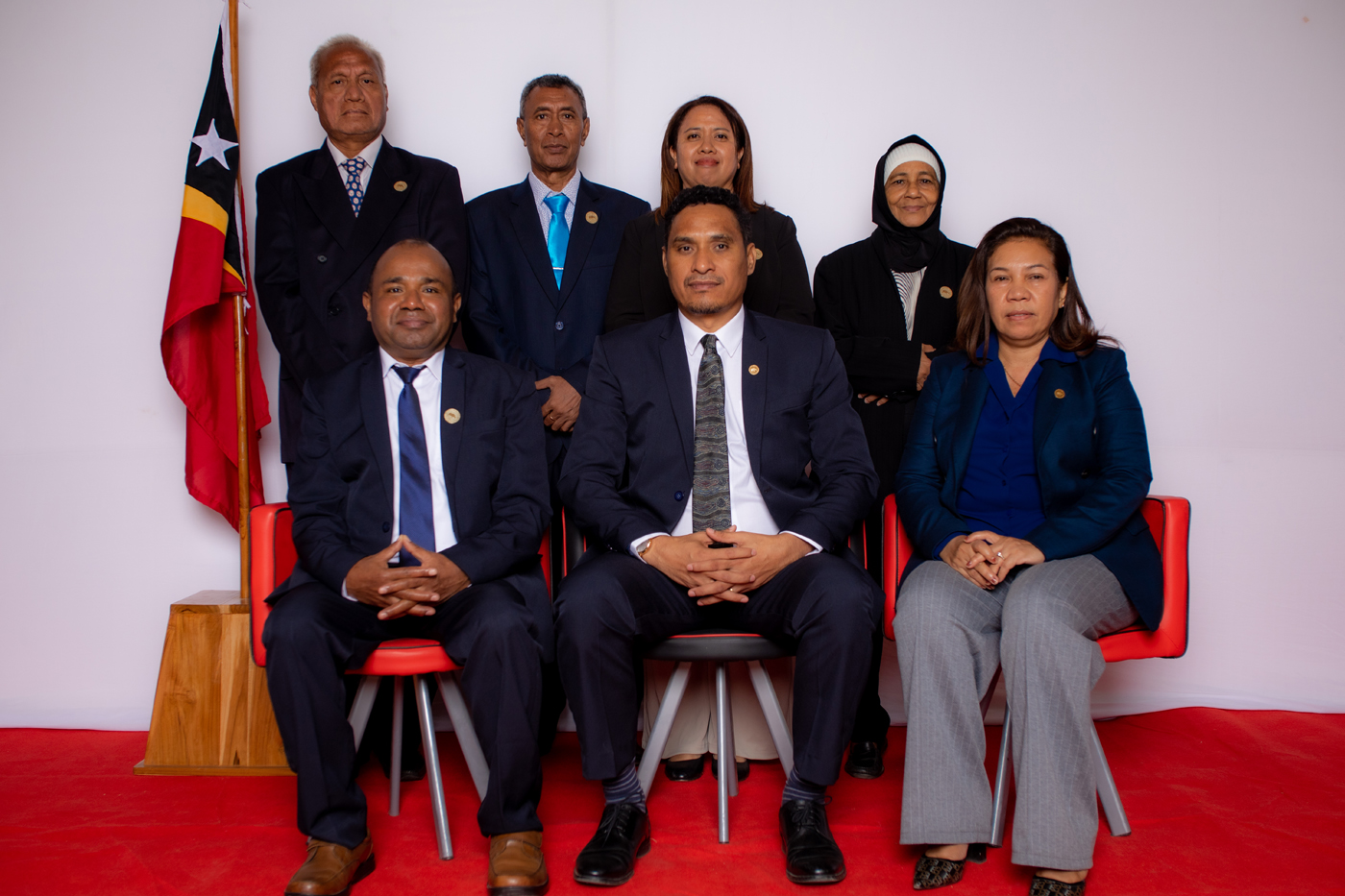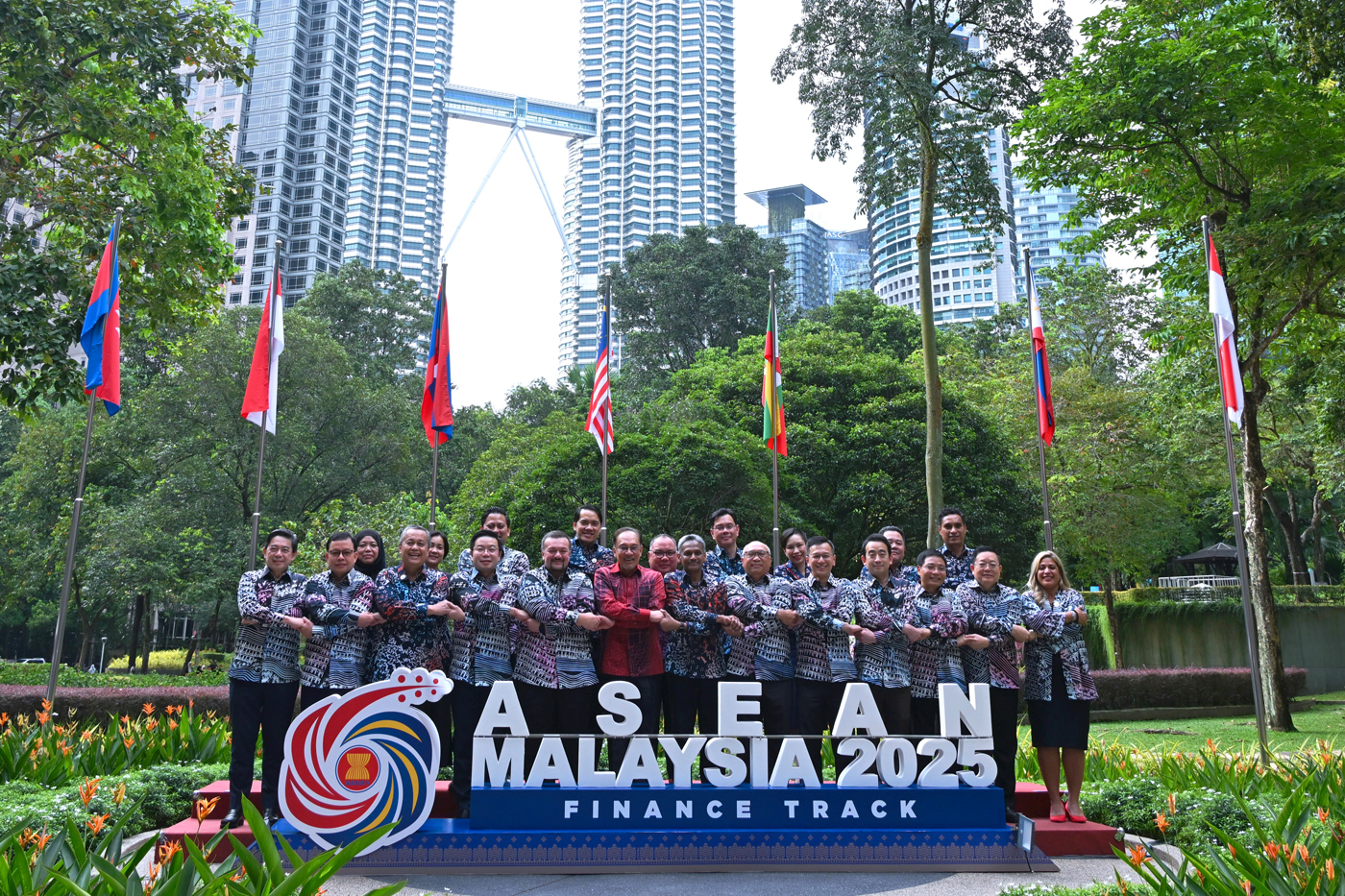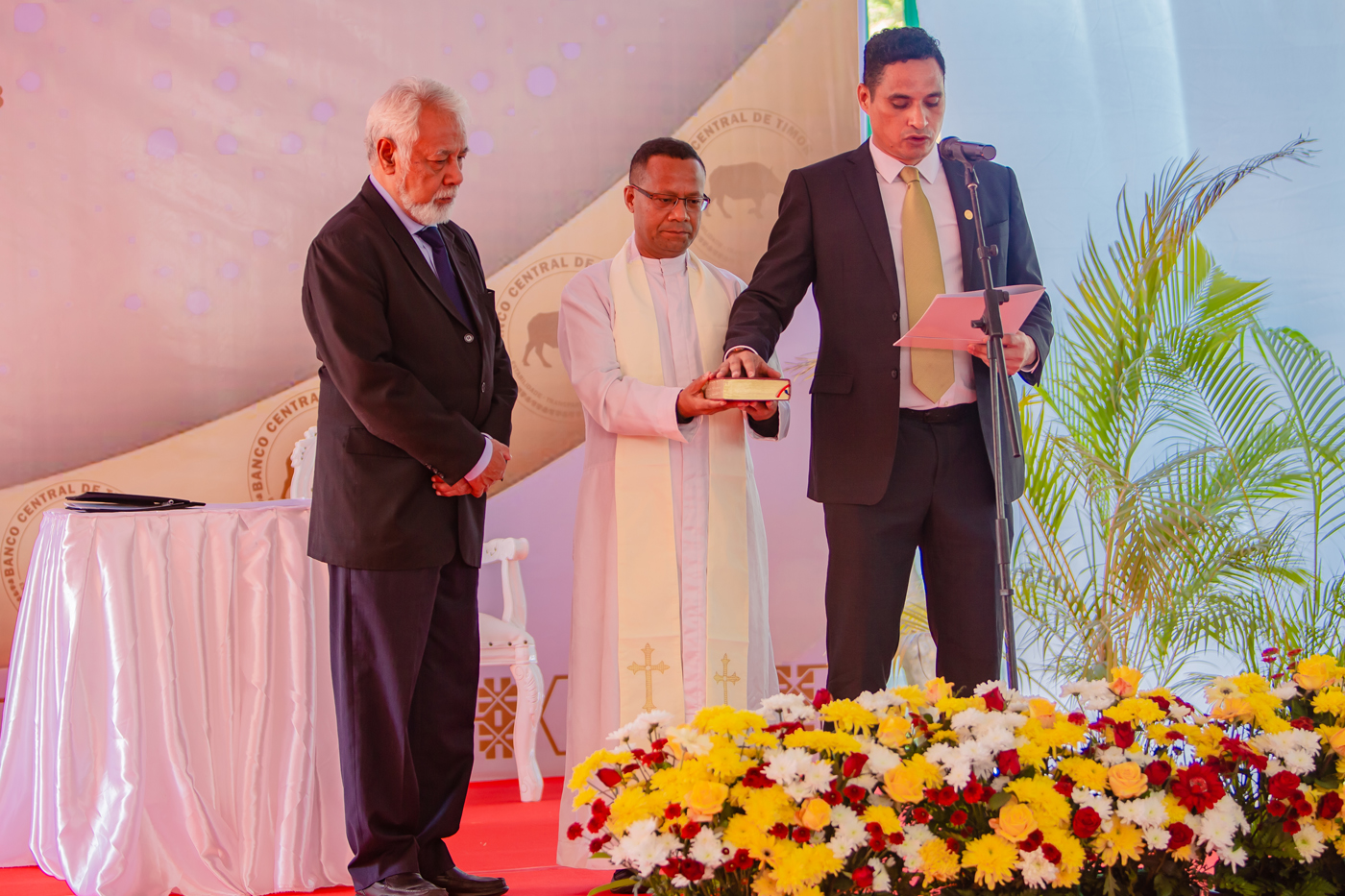Timor-Leste is Open for Business
Central Bank Governor Helder Lopes shares how Asia’s youngest nation is taking its best shot yet at financial deepening.
 By Angela SP Yap
By Angela SP Yap
In September 2023, following Timor-Leste’s parliamentary elections and formation of the current coalition government, Helder Lopes was sworn in by Prime Minister Kay Rala Xanana Gusmão as the nation’s second governor of the Central Bank of Timor-Leste or Banco Central de Timor-Leste (BCTL). Having spent a majority of his career within the Ministry of Finance, he previously served as the chief economist to the current President of the Republic, José Ramos-Horta, and was elevated from his position as the Vice Minister of Finance to his current office.
A trained economist, Governor Lopes enters the second year of his six-year tenure at the BCTL amidst formidable challenges. From pressing development challenges to unravelling generational issues such as land title reform, the stark realities of central banking in this fledgling nation calls for an unconventional skill set that is a world apart from ‘traditional’ central banking in more developed economies. It is hands on, gritty, and where the rubber meets the road.
Support from the international community to strengthen institutional capacities in the financial services sector has been strong and steady. In August 2024, the BCTL signed a cooperation agreement with the International Finance Corporation to establish a central bank institute for continuous financial sector skills development in Timor-Leste.
Closer to home, Malaysia, who is the ASEAN Chair for 2025, has been ratcheting up its support for Timor-Leste’s accession to the regional bloc. This includes a USD200,000 allocation to the ASEAN Unit under the secretariat in Jakarta to assist in achieving full-member status and training over 300 civil servants under technical cooperation programmes ranging from finance and diplomacy to agriculture and disaster management.
A culmination of its decades-long support, Malaysia’s Prime Minister Dato’ Seri Anwar Ibrahim announced on 27 May 2025 that Timor-Leste will become a full member by the 47th Asean Summit in October, subject to the fulfilment of several remaining political, economic, and legal requirements.

The following are excerpts from my 45-minute conversation with Governor Lopes on the central bank’s blueprint for Timor-Leste.
Q: As Asia’s youngest nation, the landscape of Timor-Leste is in many ways unique. Map out for us the supervisory landscape under your purview as central bank governor.
The Central Bank of Timor-Leste has five mandates, four of which are common across most jurisdictions – price stability, managing foreign exchange, supervision and development of the financial services industry for financial stability, and promoting the country’s payment landscape.
The BCTL’s fifth mandate is to manage the Petroleum Fund, the country’s largest fiscal reserve and sovereign wealth fund. My experience within the Finance Ministry, which oversees the management of the Petroleum Fund, and now leading the BCTL, which is responsible for operationalising the Fund’s investment policy, is a public office that I intend to execute by ensuring our fiscal policy is measured and sustainable for the future security of Timor-Leste.
Q: Since taking office, you have set course and taken on some big challenges in order to boost financial depth and inclusion. Have you felt at any point that you are biting off more than you can chew?
Well, I don’t believe that what I have set out as targets is impossible to achieve, however, we must all row in the same direction.
Which is why one of the most crucial matters when I took office was to establish the three strategic priorities that will drive the development of our financial services industry, each matched against its own set of measurable targets.
Firstly, we must expand credit market penetration. With only five banks in the country – four foreign, one domestic and state-owned – the credit extended to businesses, especially SMEs (small- and medium-sized enterprises), is still very low. Our credit-to-GDP ratio is less than 40%, yet we know that there is idle liquidity on these banks’ books.
Second, the digitalisation of financial services for enhanced efficiency and inclusivity. To make banking services accessible, we have established minimum requirements and coordinated with banks on the roll out of internet and mobile banking services for retail and wholesale markets.
Thirdly, financial inclusion across the country. This is crucial because the nature of our economy includes a large population employed in the informal economy with many living in the rural areas. Connecting people in the rural areas to basic financial services available in the urban centres is critical towards building a sustainable financial ecosystem.
These three strategic priorities are coupled with broader policy measures needed to boost the business and lending environment of Timor-Leste. It includes improving the regulatory framework; enhancing our financial infrastructure; and accelerating collateralisation measures, such as our land titling reform for citizens, which we advocate the government prioritise in order to develop our national mortgage market.
Q: Let’s deep dive into each of these strategic priorities. What strategies is the central bank implementing to expand credit market penetration and address the challenges of Timor-Leste’s limited banking sector?
As we are a young nation, bringing credit depth requires that we cultivate a strong relationship with the banks in order to raise the standards of finance and make it accessible to the majority of Timorese.
What we have gathered from our regular consultations is that the banks deem the lending environment to be risky; instead of lending to businesses in the country, they prefer to place the liquidity overseas. There is idle liquidity in the banks comprising of local deposits from our people, monies which are placed overseas instead of being reinvested into the economy of Timor-Leste.
For this, my team and I are working to improve the lending environment for the industry, banks, and other financial institutions, creating a climate where they are managing their liquidity in a way that will create a virtuous cycle of wealth within the economy.
We have approached this in two ways.

The central bank currently imposes a minimum loan-to-deposit ratio (LDR) of 35% to banks in order to stimulate lending. If a bank’s LDR falls below the minimum threshold, let’s say 25%, it must place the shortfall of 10% in a zero-interest-bearing account held at the central bank.
The objective of the LDR is to inject liquidity into the consumer and SME lending markets. It is a temporary policy imposed to correct what the central bank sees as a major imbalance in the allocation of credit resources within our banking system. To date, almost all banks have met this requirement. The target is to increase the loan-to-GDP ratio from 50% to 75% by the end of my six-year term.
The International Monetary Fund has given us their opinion that this is not a good policy to impose, however, we must pursue policies that are suited to the context of Timor-Leste.
We foresee that once the lending environment improves and financial institutions have adjusted to the reforms that are required for financial deepening and inclusion, the minimum LDR policy will be withdrawn because there is already a balanced and symbiotic relationship between banks and the business community.
Q: Now that all banks in Timor-Leste have deployed internet and mobile banking solutions, what is the next hill to climb in the digitalisation of financial services?
Over 90% of Timor-Leste’s population currently have access to financial services – either through banks or fintech – while current account ownership stands at close to 65% of our adult population. Within the next few years, we want financial service access to reach at least 95% of our population with a corresponding increase in current account ownership.
The central bank’s approach is to achieve this by leveraging technological innovation with strategic partnerships.
We strongly encourage banks to establish agent banks in hard-to-reach rural areas and collaborate with fintech companies to expand financial services in ways that are accessible, affordable, and convenient. Banks can work together with local businesses or fintech companies that are currently operating in Timor-Leste and possess a ready network of agents in order to provide basic financial services to the rural areas.
There are some existing limitations. Our telecommunication infrastructure needs to be enhanced in terms of uptime, range, and network. We would also like to transition from our primarily cash-based society into a cashless economy through the introduction of QR codes, e-payments, and fintech-led transfers. By 2029, we aim for 50% of all financial transactions to be electronic based.

Which is why both financial literacy and digital financial literacy among end-users are of equal importance. Although the financial platform is available, people may not know how to use it, which is why the two must be addressed hand-in-hand.
Q: What financial inclusion strategies is the central bank pursuing and what targets have you set in this area?
Overcoming the infrastructure hurdles in internet delivery, the central bank and current administration had earlier requested that the banks – working within the constraints and conditions of the country – provide internet and mobile banking on a best-effort basis to people throughout Timor-Leste. Industry players have been supportive of the outreach work needed to improve access to finance and financial literacy. This has paid off and they are now reaping the benefits of this ‘investment’ in terms of greater adoption of digital financial services and at greater cost efficiency.
The central bank also manages the retail and wholesale payment switches that are currently in place. Our next big project is introducing an instant payment infrastructure, with one of its big elements being the standardised QR code – similar to Malaysia’s DuitNow QR – which will allow Timorese to make payments and receive funds from participating banks and e-wallets instantly with just one QR code.
For fintech, we look to two important elements in the services that they provide. The first is the transfer and payment function catering to the underbanked or unbanked segments; their e-wallets are complementary to the savings function of traditional banks. The second is development of a national digital identification (ID) platform to accelerate financial inclusion, allowing use cases such as ‘know your customer’ and credit profile building to be deployed nationally with minimal friction.
Q: How are you preparing for Timor-Leste’s integration into the ASEAN financial system?
We are very proud to have earned the trust of the ASEAN community and wish to thank Malaysia for supporting our country’s aspiration for full membership.
From a regulatory perspective, the upcoming accession to ASEAN incentivises us to put into motion the institutional perspectives, legislative frameworks, and human resources needed to meet the requirements expected by the regional bloc. During our discussions at the recent Central Bank Governors Meeting, ASEAN will be the fourth largest global economy by 2045 and countries will need to deepen economic integration – this will attract more investments into our country and open market access for our 1.3 million population.
Financial integration has been a mainstay of the ASEAN agenda; we are preparing ourselves by raising the bar in order to meet the market where it is at and ensure a level playing field in the financial services industry. This includes regional payment integrations such the cross-border QR code payment interoperability which will benefit key economies in the country from banking and finance to travel and tourism.
The Central Bank of Timor-Leste is preparing itself to join the ASEAN club.
Q: If there is one message you would send out to the world about your country, what would it be?
[smiles] Timor-Leste welcomes you and we are open for business.
Angela SP Yap is a multi-award-winning social entrepreneur, author, and financial columnist. She is Director and Founder of Akasaa, a strategic consulting and publishing firm with offices in London, Kuala Lumpur, and Sharjah. An ex-strategist with Deloitte and former corporate banker, she has also worked in bond pricing and in international development with the UNDP. Angela holds a BSc (Hons) Economics.